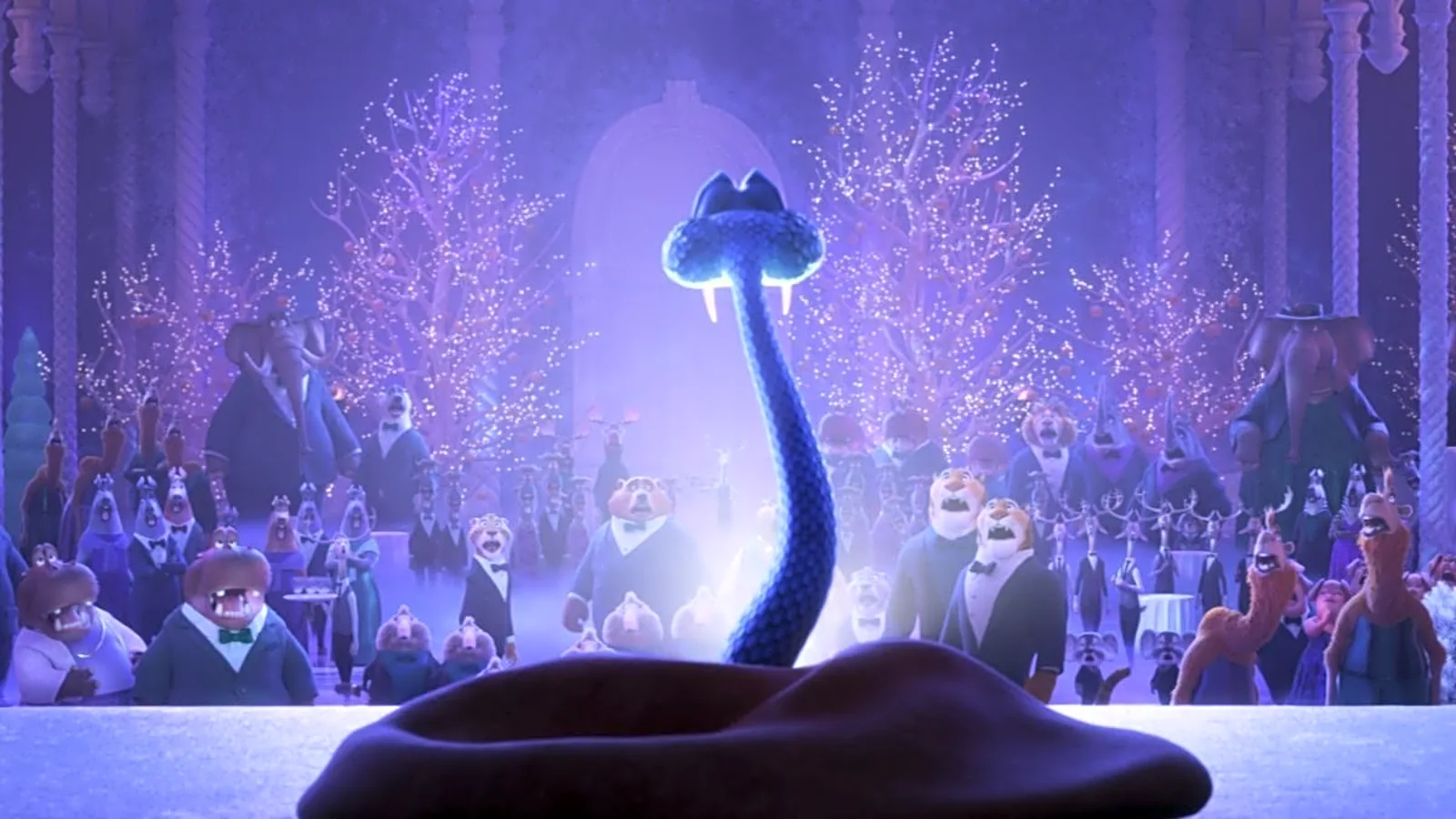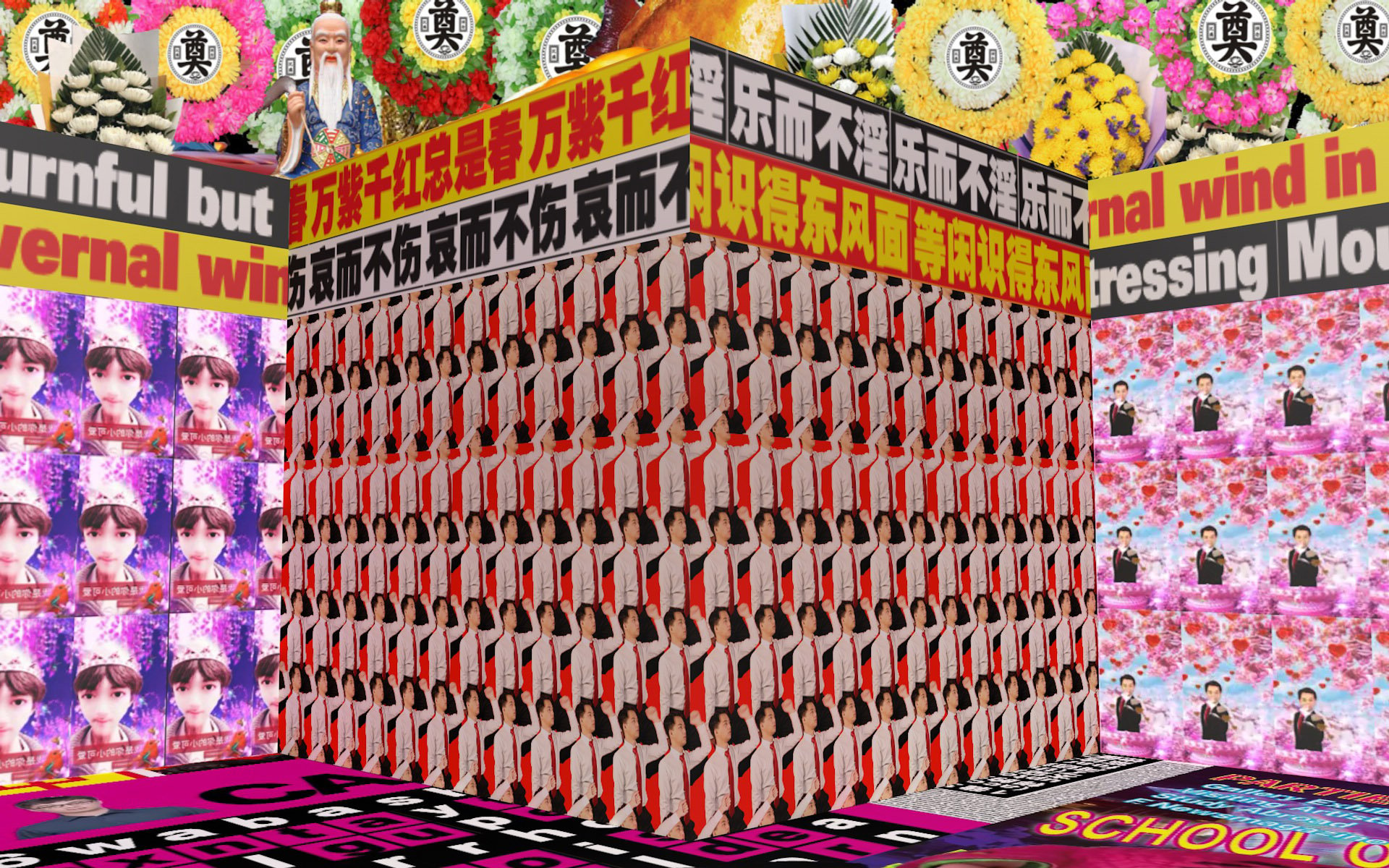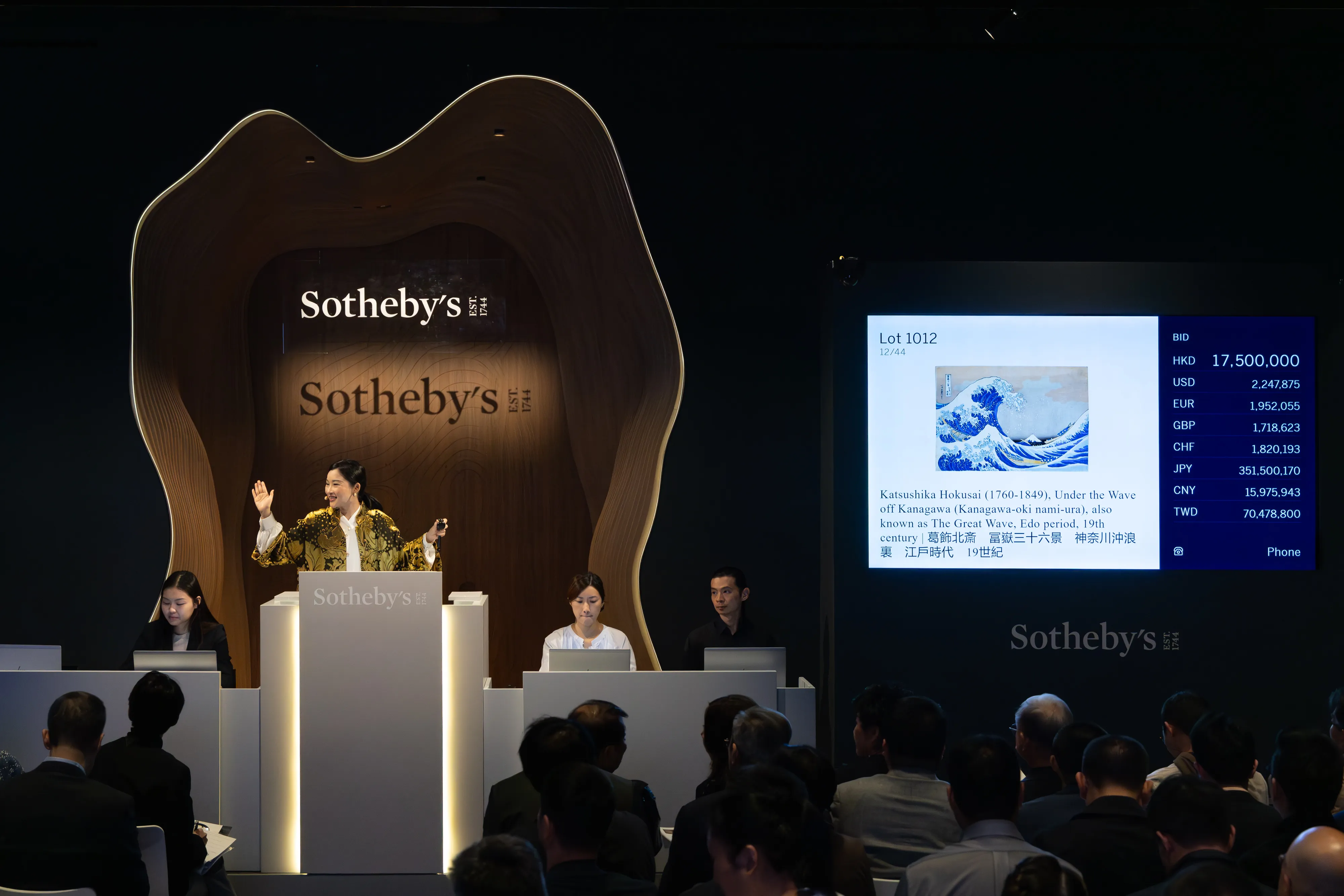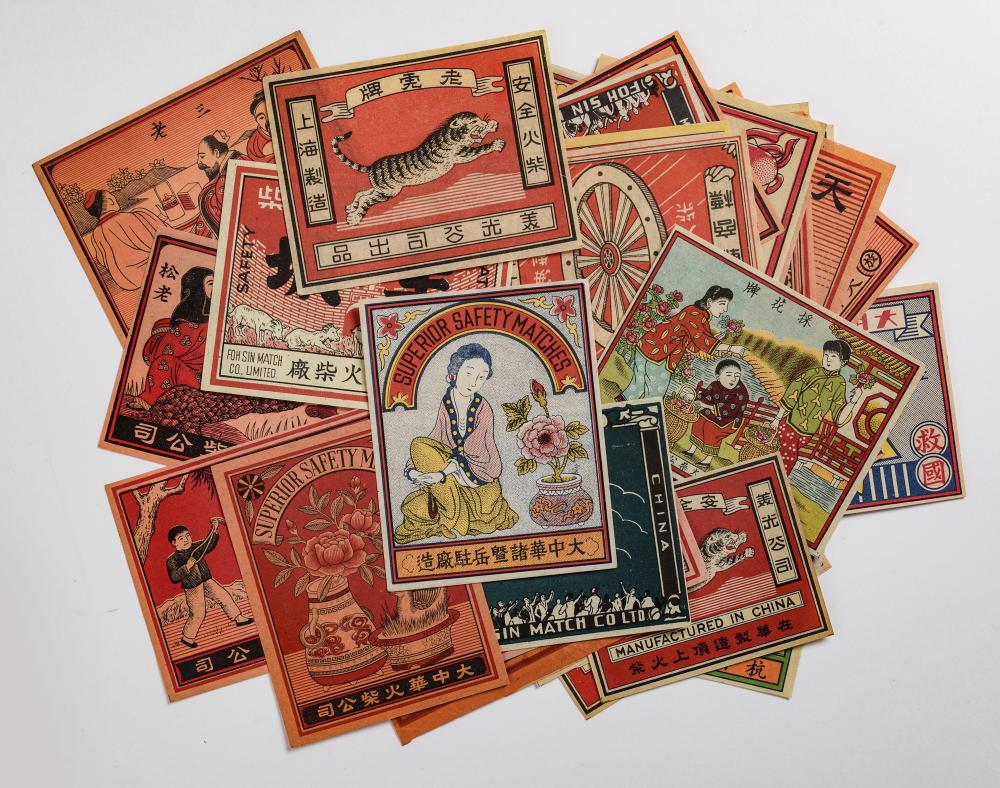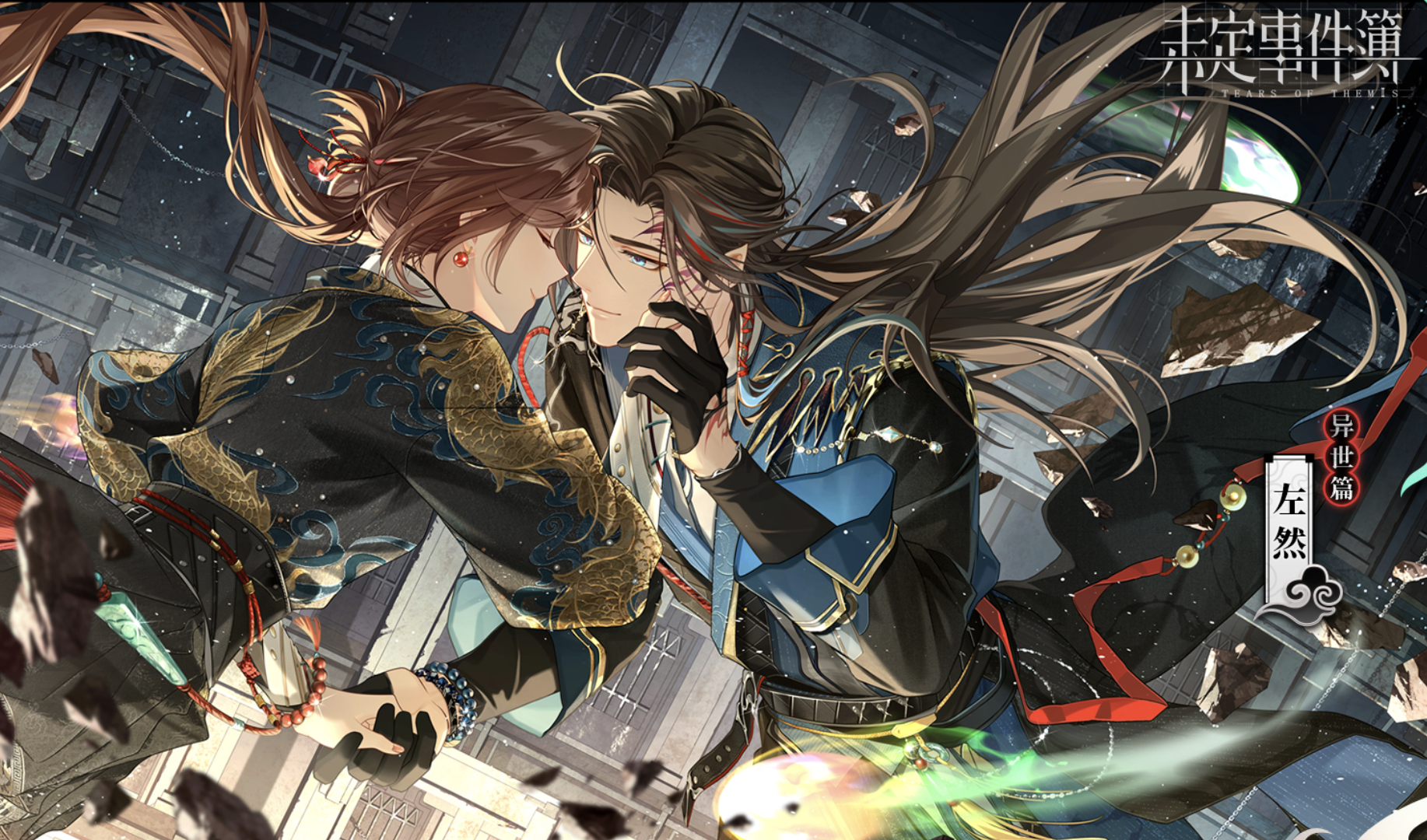China’s Digital Renaissance is a series exploring new currents in Chinese contemporary art, created in partnership with East West Bank. This article centers on Du Kun, whose work blurs the line between disparate media.
Conceptually and practically, Du Kun’s work is about pushing the line.
The Sichuan-born artist combines mediums of painting, architecture, and rock music to create captivating pieces. The result is a new product that’s rooted in the Chinese visual tradition, but which embraces a refreshing willingness to delve into the unknown.

Born in 1982 in the city of Suining, Du Kun graduated from a high school affiliated with the China Academy of Art, before later obtaining a Bachelor’s degree in oil painting from the Central Academy of Fine Arts in Beijing in 2007.
One of Du Kun’s well-known series is Revels of the Rock Gods (众神闹), where he combines his passion for music, Buddhist and Confucian architecture, and oil painting.
The series features monumental temple-like portraits of Chinese rock musicians. Du Kun explained that it reflects the transformative era of his upbringing, where he and his generation were shaped by a mix of traditional values and Western ideas.
“Those of us born in the 1980s were heavily influenced by traditional Buddhist or Confucian values, but also grew up with the great impact of Western ideas. We live in a great transformative era in China,” he told CNN during an interview. “I tried to express the idea of freedom, democracy, critical thinking, and courage of overthrowing the past through the rock singers.”
In his series “Scores of Landscapes (谱山水)”, Du Kun merges traditional Chinese landscape painting with elements of contemporary music, blending visual art with an auditory experience.
“The scrolls of landscape paintings in this series look serene and ancient as if they have frozen the history of thousands of years. But in fact, these landscapes themselves are pieces of nervous, sad, atonal, and even eccentric music,” he explained .
“Playing music is my only hobby. I explain music theory entirely in terms of painting. In fact, they are interlinked. It can be said that a painter composes music with pigments, and a musician uses sounds to paint, just like mutual translation between different languages.”
Du Kun applies his music composition to the medium of painting, translating the visual waveforms of sound into traditional Chinese landscape paintings. Those paintings and musical compositions end up as videos or animations, for a final multimedia product.
His approach highlights an interconnectedness between painting and music that can be hard to pinpoint.
“I think today’s audience tends to be more visually oriented because it’s faster to obtain information from a picture than from a song. In this fast-paced society, I think visuals spread information faster and more directly than music,” he told RADII.
Du Kun’s work has received plenty of international attention. His collaboration with the advertising agency Saatchi & Saatchi earned him a Gold Award at the One Show Advertising Awards, and in 2020, he was nominated for the Sovereign Asian Art Prize in Hong Kong.
While Du Kun acknowledges the benefits of digital technologies in his creative process, he consciously avoids relying on AI, instead focusing on crafting his own distinctive sound and performance that he feels can’t be generated by any software.
“Modern digital technology is precise and rarely makes mistakes, unlike humans who are prone to errors. Beauty lies in flaws, twists, and happy accidents, making our mistakes the raw material for the artistic expression of our humanity,” he says.
All images via Du Kun
